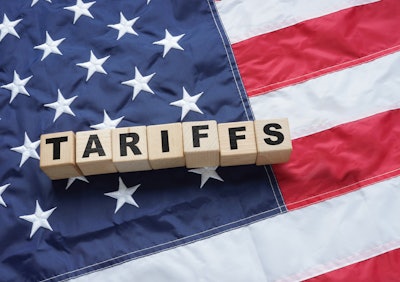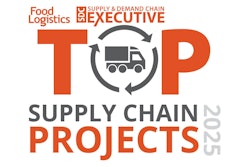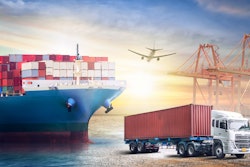
As the new U.S. government unleashes DOGE to deliver in its promise to cut down costs and achieve efficiency, privately owned businesses are also doubling down on operations to identify potential areas for cost reduction, especially as new tariffs threaten margins. The latest Hackett Report reveals that procurement teams plan to make greater savings in 2025 compared to 2024, using a two-pronged approach of both price reduction and cost avoidance. The same report highlights that the Top 3 priorities for procurement teams in 2025 include improving spend cost reduction, ensuring supply continuity and transforming the operating model. Artificial intelligence (AI) tools that help streamline and automate operations, while providing additional insights through rapid and broad data analysis, stand out as a key pathway to drive collaborative efficiencies across the supply chain.
While efficiency has always been a mainstay of doing good business, the renewed focus on cost cutting is certainly in part due to the geopolitical climate and its impact on supply chains, decision making and investments. While blanket 25% tariff hikes on Canada and Mexico have so far been postponed to March 12, the full levy will immediately be applied to steel entering the United States from the two countries. Exemptions to this toll cover Argentina, Australia, Brazil, Canada, Japan, Mexico, South Korea, the European Union, Ukraine, and the United Kingdom, which, however, has been called upon by Canada to take a stance alongside its former commonwealth ally on tariffs.
Existing supply chain agreements are being rocked, not only by U.S. imposed levies but by the flurry of counter tariffs that other countries will impose in retaliation. While Canada is promoting a “Buy Canadian” stance, effectively urging citizens to boycott American products, China has responded to a 10% tariff hike with targeted counter measures and an antitrust investigation into Google. China will also impose a 15% tariff on coal and liquefied natural gas products entering from the United States as well as a 10% tariff on crude oil, agricultural machinery and large-engine cars and has announced controls on the export of some of its rare minerals such as tungsten, tellurium, bismuth, molybdenum and indium which play a critical role in the U.S. economy in industries such as aircraft, vehicle, solar panel and semiconductor manufacture. By contrast, President Trump is in talks with India, which may actually lower its tariffs to benefit from the shifting supply chain axis.
It’s clear that this climate of uncertainty is driving at least some of the desire to reduce expenditure in businesses that realize they should be leveraging technological tools to help enact strategies to build cash reserves as they face price hikes, conflict and resource scarcity. Yet how to achieve efficiency in a shifting scenario, where traditional suppliers may suddenly become off-limits, is no simple task. Businesses importing steel in particular may need to reevaluate where their suppliers are based. Makers of cans for sodas, beer and foods, automotive manufacturers and the construction and housing industry, as well as producers of electrical appliances will all have to consider sourcing at least some of their steel from outside the usual Canada or Mexico supply chain, which currently provides 90% of overall scrap aluminum and 70% of the material for canned foods. While the objective of steel tariffs is to reinforce national production, the reality is that the infrastructure to rapidly respond to such a huge increase in demand is simply not there and will take years before enough facilities are built to produce the required volumes of goods entirely autonomously.
When it comes to contrasting the impact of tariffs, therefore, one knee jerk reaction might be to try and renegotiate contracts to shave off some overheads. This is, however, a shortsighted strategy that undermines overarching business objectives relating to quality and customer satisfaction, while also damaging supplier relationships. In addition to this, shaving off the impact of a levy as high as 25% will inevitably erode margins to potentially unacceptable levels for both parties. Finally, counter measures by international governments may also include controlling volumes of goods that are shipped to a specific country, making any type of price-deal ineffective anyway.
Supply chain executives must therefore find other strategies to effectively achieve cost savings and draw up new supplier maps fit for a changing world. Improving supplier collaboration is a key way to reduce costs and gain a broader range of advantages, such as helping de-risk operations while maintaining high standards of quality and service, better pricing, and more innovative solutions to boot. For example, suppliers that provide heavily taxed components may suggest new sources for raw materials, perhaps tapping into emerging markets. This could help drive down costs for both parties while also providing a larger plethora of choices to the buyer. Similarly, the supplier may suggest some alternatives that are more sustainable or bring additional ethical benefits that previously compared unfavorably with the market on pricing.
Finally, to achieve these objectives, procurement leaders should consider focusing on a few collaborative strategies driving shared visibility to ensure information is immediately available to all decision makers. Potential price hikes concerning Tier 2 and Tier 3 suppliers can be addressed successfully with suitable alternatives, if they are planned for in advance. Avoiding stock outs, production halts and bottlenecks is critical in this climate and can be achieved through the analysis of pooled information.
To avoid overburdening procurement departments and suppliers at this complex time, it is critical that information sharing is streamlined and automated, leveraging the potential of AI tools wherever possible. This will ensure that alerts, updates and other critical information reaches destination in a timely way and without potential errors introduced by manual data entry. Achieving a clear and overarching view of the supply chain will help protect businesses from future uncertainty, while also offering a much broader and more complete analysis of the complex international market. Companies that want to stay ahead of the game have already invested in solutions that support the integration of data siloed in different departments and from the outside world such as the IoT, combining these solutions with data from across the supply chain will help navigate the new world of supply chain. As global trade gets rewritten, businesses that are able to see further and more clearly, by analyzing and processing market data, hold a key competitive advantage.
















![Pros To Know 2026 [color]](https://img.sdcexec.com/mindful/acbm/workspaces/default/uploads/2025/08/prostoknow-2026-color.mduFvhpgMk.png?ar=16%3A9&auto=format%2Ccompress&bg=fff&fill-color=fff&fit=fill&h=135&q=70&w=240)

